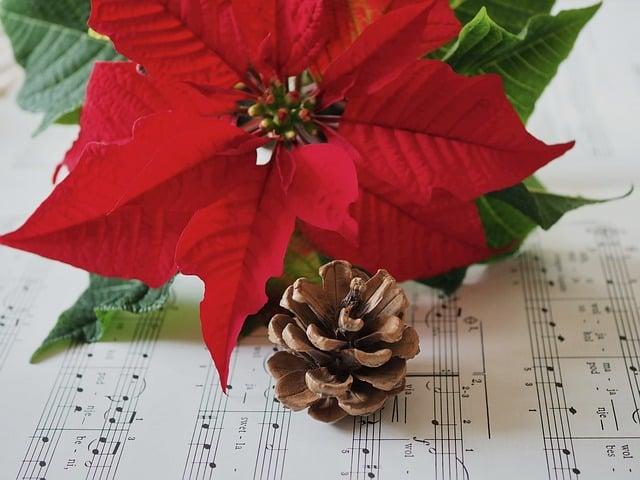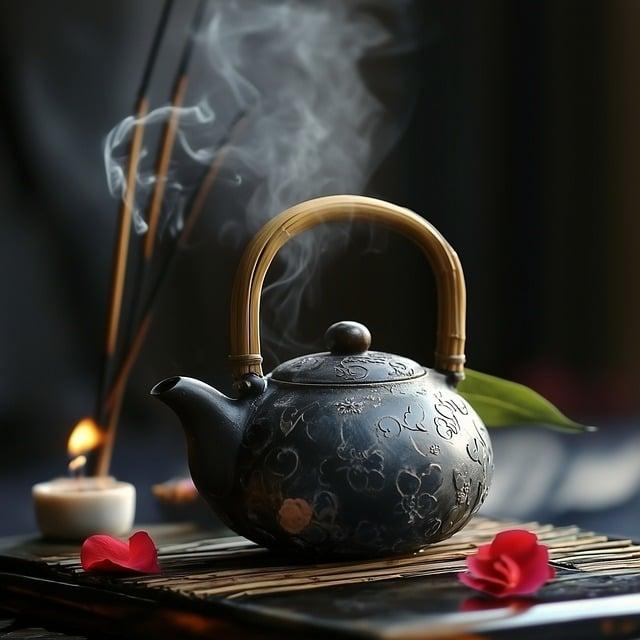As the first candle flickered to life on the Advent wreath, a hush fell over the room. Each week, a new candle would join the glow, symbolizing hope, peace, joy, and love. Children gathered around, their eyes wide with wonder, as their grandmother shared tales of the season. The evergreen branches whispered of eternal life, while the circular shape reminded them of God’s unending promise. With each passing day, anticipation grew, not just for Christmas, but for the warmth of togetherness and the light that would soon fill their hearts.
Table of Contents
- The Significance of the Advent Wreath in Celebrating Anticipation
- Exploring the Colors of Advent: Meaning Behind Each Hue
- Traditions and Rituals: How Families Embrace the Advent Season
- Symbols of Hope: The Role of Scripture and Prayer During Advent
- Q&A

The Significance of the Advent Wreath in Celebrating Anticipation
The Advent wreath serves as a profound symbol of the anticipation that permeates the season leading up to Christmas. Traditionally crafted from evergreen branches, the wreath represents **everlasting life** and the hope that comes with the birth of Christ. Each of the four candles, typically arranged around the circle, signifies a week of Advent, illuminating the path toward the celebration of Jesus’ arrival. As the weeks progress, the lighting of each candle not only brightens the wreath but also deepens the sense of expectation and joy within the hearts of those who gather around it.
Each candle holds its own significance, often associated with themes such as **hope, peace, joy,** and **love**. The first candle, often purple, symbolizes hope and is lit on the first Sunday of Advent, while the second candle, also purple, represents peace. The third candle, usually pink, signifies joy and is lit on the third Sunday, marking a shift in the season’s tone. the fourth candle, again purple, embodies love and is lit as the final week approaches. This ritual of lighting the candles not only enhances the festive atmosphere but also invites reflection on the deeper meanings of the season, fostering a sense of community and shared anticipation among families and congregations alike.

Exploring the Colors of Advent: Meaning Behind Each Hue
The season of Advent is rich with symbolism, and the colors associated with it play a significant role in conveying its deeper meanings. Traditionally, the liturgical colors used during this period are **purple**, **pink**, and **white**. Each hue carries its own significance, inviting reflection and anticipation as we prepare for the celebration of Christmas. **Purple**, often seen in the vestments and decorations, symbolizes **penitence and preparation**. It serves as a reminder of the need for spiritual readiness and the importance of self-examination during this sacred time. This color encourages believers to engage in prayer and contemplation, fostering a deeper connection with their faith.
As we move through the Advent season, the **pink** candle, lit on the third Sunday, signifies **joy** and the nearing of Christmas. This shift in color represents a moment of hope and celebration amidst the reflective nature of the season. It reminds us that while we prepare for the coming of Christ, we can also rejoice in the promise of His arrival. **white**, often used on Christmas Day, symbolizes **purity and the joy of Christ’s birth**. It encapsulates the fulfillment of the Advent journey, celebrating the light that has come into the world. Together, these colors weave a tapestry of meaning, guiding the faithful through a transformative period of waiting and hope.
Traditions and Rituals: How Families Embrace the Advent Season
As the Advent season approaches, families around the world engage in a tapestry of traditions and rituals that breathe life into this sacred time. **Advent calendars** are a beloved custom, with each day revealing a small surprise or a meaningful scripture, building anticipation for the celebration of Christmas. Many families also light a new candle on their **Advent wreath** each week, symbolizing hope, peace, joy, and love. This simple act transforms the home into a sanctuary of reflection, where the flickering flames remind everyone of the light that is to come.
In addition to these practices, families often gather for **special meals** that incorporate seasonal flavors and recipes passed down through generations. **Singing carols** and sharing stories of the Nativity foster a sense of community and connection, reinforcing the values of generosity and kindness. Some families even participate in **charitable acts**, embodying the spirit of giving that Advent encourages. Through these rituals, families not only prepare their hearts for the holiday but also create lasting memories that enrich their bonds and celebrate the essence of the season.

Symbols of Hope: The Role of Scripture and Prayer During Advent
During the Advent season, the act of prayer becomes a profound symbol of hope, inviting individuals to pause and reflect on their spiritual journey. As families gather around the Advent wreath, the lighting of each candle serves as a reminder of the growing anticipation for the celebration of Christ’s birth. Each flicker of flame represents not only the light of faith but also the warmth of community and shared devotion. Through prayer, believers express their hopes, fears, and gratitude, creating a sacred space where they can connect with the divine and seek guidance for the days ahead.
Scripture plays an equally vital role in this season of waiting and preparation. Verses from the Bible, particularly those that speak of promise and redemption, resonate deeply during Advent. They remind us of the prophetic words that foretold the coming of the Messiah, instilling a sense of purpose and direction. Key themes often highlighted include:
- Hope: The assurance that God is with us, even in times of uncertainty.
- Peace: The call to find tranquility in the midst of chaos.
- Joy: The celebration of the gift of life and love through Christ.
- Love: The foundation of our faith, urging us to extend kindness to others.
As we immerse ourselves in these sacred texts, we cultivate a spirit of expectation, allowing the words to inspire our actions and deepen our faith. Together, prayer and scripture illuminate the path of Advent, guiding us toward a more profound understanding of hope and the promise of new beginnings.
Q&A
-
What is the primary symbol of Advent?
The primary symbol of Advent is the Advent wreath, which typically consists of a circular arrangement of evergreen branches. This symbolizes eternal life and hope, with four candles representing the four weeks of Advent.
-
What do the candles on the Advent wreath represent?
Each candle on the Advent wreath has its own significance: three purple candles symbolize hope, peace, and joy, while one pink candle represents love. The candles are lit progressively each week, culminating in the lighting of the white candle on Christmas Eve or Christmas Day, symbolizing the birth of Christ.
-
Are there other symbols associated with Advent?
Yes, other symbols include the Jesse Tree, which represents the lineage of Jesus, and the Nativity scene, which depicts the birth of Christ. Both serve to remind believers of the significance of the season.
-
How does the color purple relate to Advent?
Purple is the liturgical color for Advent, symbolizing penance, preparation, and royalty. It reflects the anticipation of Christ’s coming and the need for spiritual readiness during this sacred season.
As we embrace the season of Advent, let us reflect on the symbols that guide us through this journey of anticipation and hope. Each candle, wreath, and prayer invites us to prepare our hearts for the joy of the coming celebration.

大家好,我是彼得潘,專業的手法身體治療師。我喜歡探索和研究各種主題,並透過與人工智慧的合作分享專業、實用、有趣的文章。我們定期進行人工審核,以確保內容的準確性。如果您發現文章中有任何不準確的地方,請隨時與我們聯繫,我們會及時糾正。您可以透過 [email protected] 與我們聯繫。



